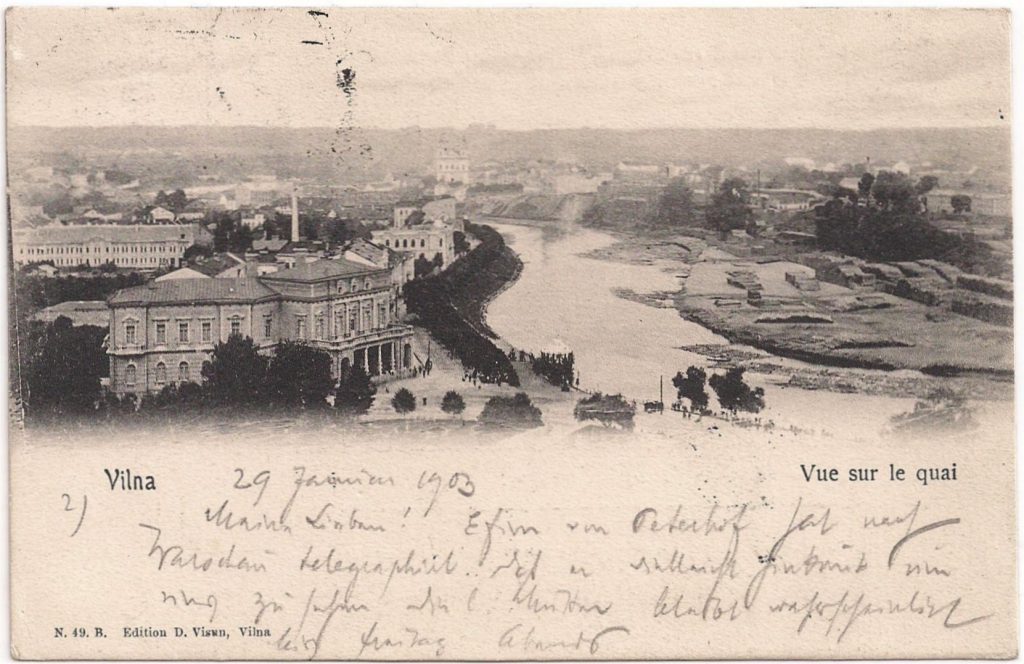In circular 13 of 5 April 1890 the instruction arrived to use Roman numerals for new stamps. This happened on suggestion of the U.P.U., the Universal Postal Union.
Also the postmarks in Russia change in the ‘crossed date’-type. In the middle the day stays first, under it the month (in Roman numerals), left of the whole the century and right the rest of the year.
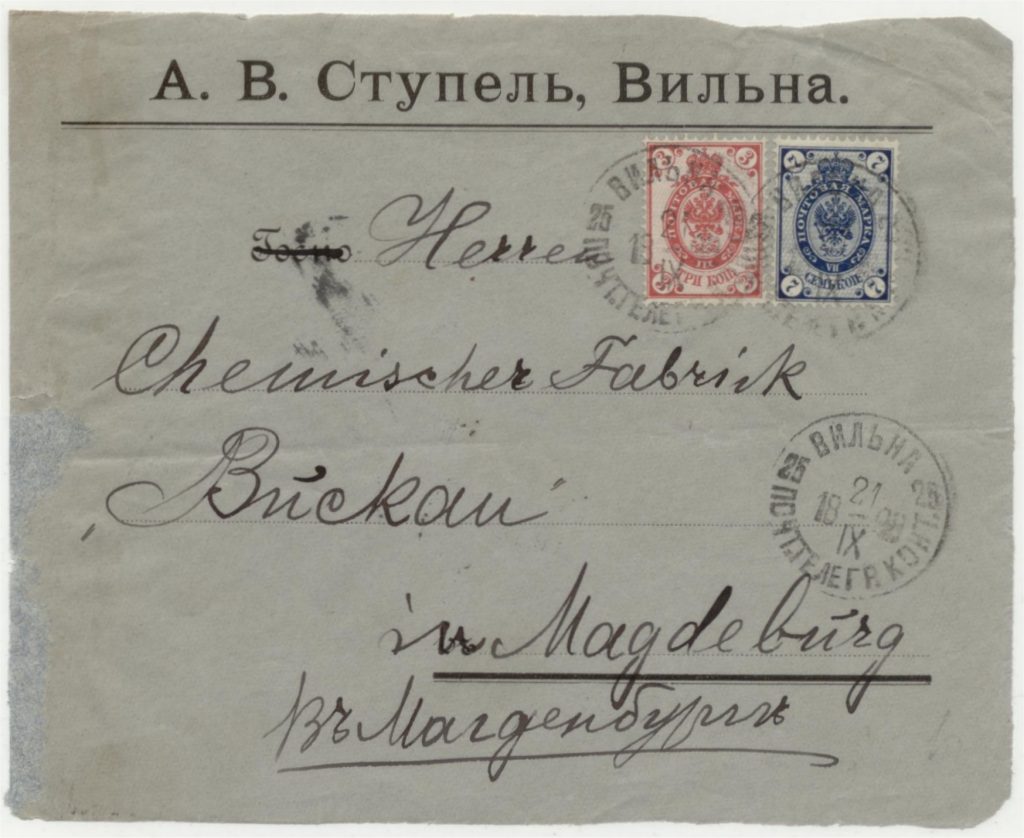
In the classification of the EESTI-handbook:
Type 6: gubernia (when given) at top and the type post office below
Type 6C: month in numerals with gubernia (the ‘cross-date’-type).
Type 6D: month in numerals without gubernia (the ‘cross-date’-type).
In postmarks of Vilnius, the capital of the Gubernia, the Gubernia is not mentioned, it was not necassary. So for Vilnius we have only type 6D.
The subdivion of type 6D:
6D1: with indication ПОЧТ. ТЕЛЕГР. КОНТ.
Not in the handbook as type, but recorded for Vilnius:
6D2: with indication ПОЧТОВАЯ КОНТОРА [POCHTOVAYA KONTORA]
On the cover above is used postmark type 6D1, on the card here below is used postmark type 6D2.
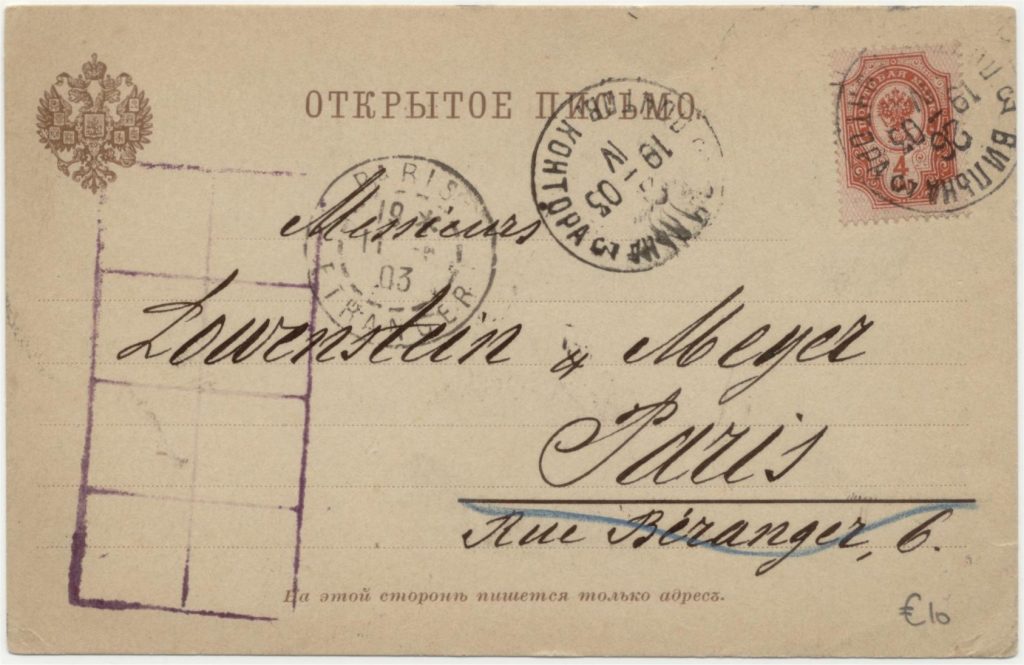
In the postmark of this card we see the older indication: ПОЧТОВАЯ КОНТОРА (POCHTOVAYA KONTORA = Post office).
As we have seen before: until 1884 this was a type of post office, which served a large town, as Vilnius was, and was under direct control of the Chief Office (Pochtamt) of the postal district.
In the handbook of Fugalewitch cross-date postmarks are mentioned from serial number 1 up to serial number 28.

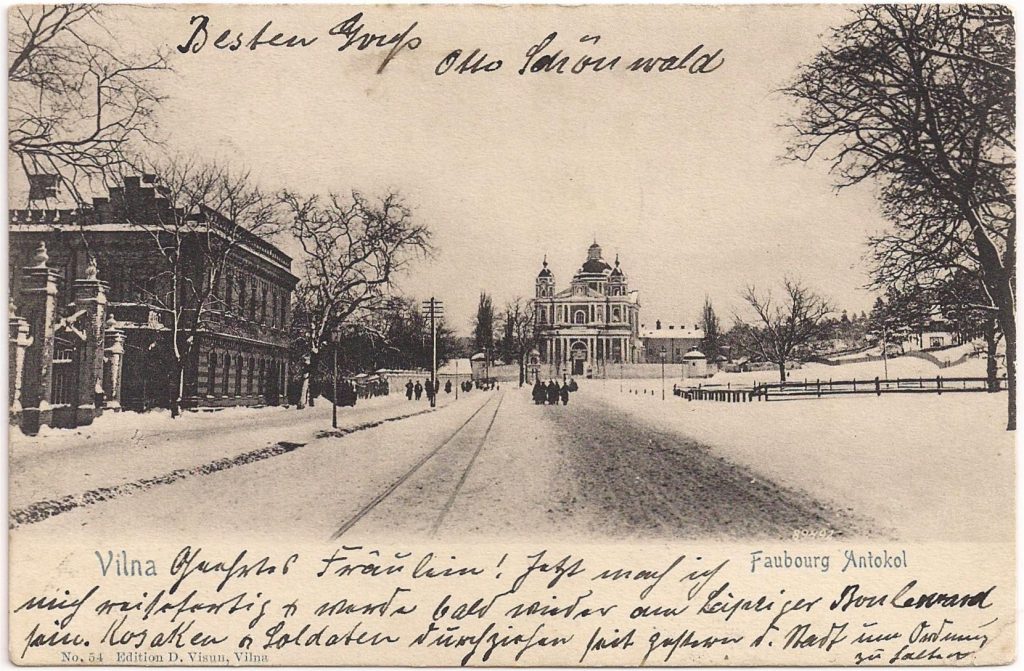
Wikipedia, here also more infomation about this beautiful church.
Antokól is the Polish name for this part of Vilnius, now the Lithuanian name is in use: Antakalnis, literally ’the place on hills’.
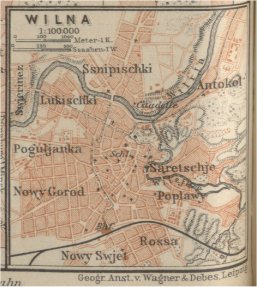
On this map (1912) of Vilnius are indicated the parts of the city, Antokól, Lukishki, …
From: Baedeker’s Russia 1914 / Karl Baedeker. – First English edition published 1914, – This edition reprinted in 1971 and jointly published by David & Charles Newton Abbot and George Allen & Unwin London.- p. 39:
In the suburb of Antokól (….) are the Church of SS Peter & Paul, prettily situated on a slope, and completed in 1684, and the Military Hospital, built in 1691 as the château of the Princes Sapieha.
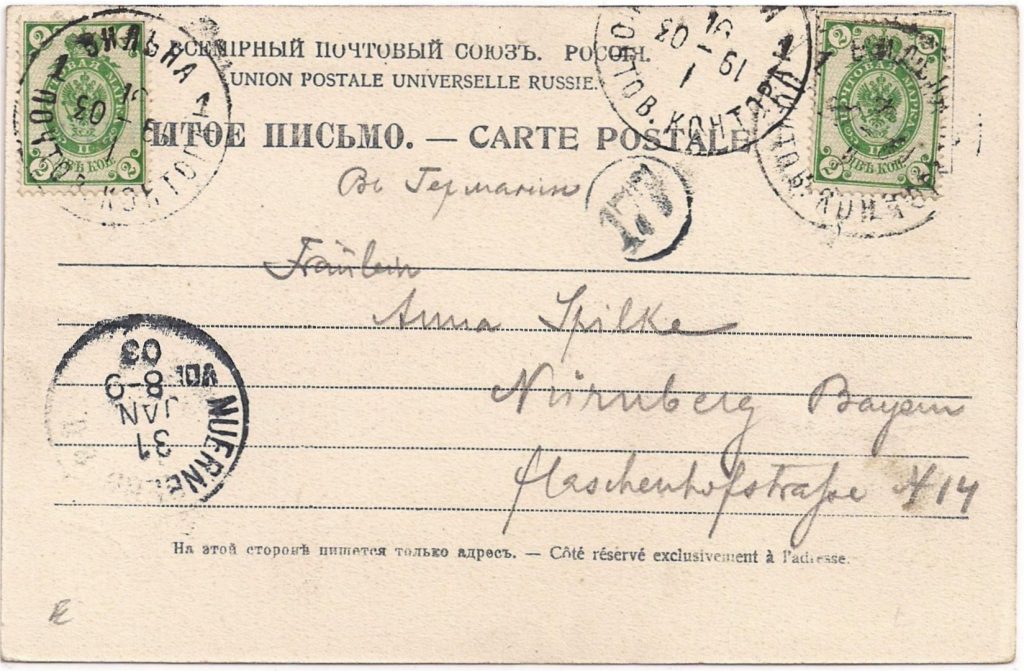
The postmark, is also the cross-date postmark of ВИЛЬНА (Vilna), with serial number 1.
